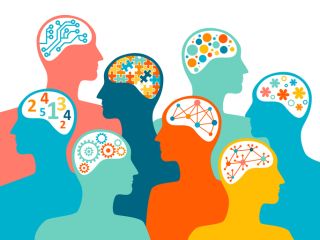Neurodiversity
Raising a Neurodivergent Child
The bumpy road from "fixing" to embracing.
Posted August 9, 2023 Reviewed by Davia Sills
Key points
- Many parents start the journey of their child's diagnosis on a quest to "fix" them.
- The neurodiversity paradigm values all human diversity but not to the exclusion of treating distress.
- Embracing one's child's unique neurology leads to better outcomes for parents and children alike.
I was 36 when I saw March of the Penguins, and this sweet documentary inspired some life force within me to bring into being my own little baby to love. I had been licensed as a clinical psychologist for just two months when my son was born prematurely. After getting stuck in the birth canal and requiring 20 minutes of resuscitation, my son’s entry into the world was terrifying.
This was the beginning of what has been a 16-year journey from devastation to purpose and hope. It is a path many families experience when there is a deviation from the typical developmental track. The shift in expectations can throw families into an abyss of fear, confusion, and sometimes despair. Dire predictions for your child’s future often set parents on a desperate quest to “save” their child.
My son’s early years were filled with therapy and doctors, clouded in a fix-it mentality that felt pressured and relentlessly high-stakes. Every day felt vital to creating the person my son could become, and any illness, resistance, or setback felt catastrophic for delaying his developmental progress.

I was determined to “cure” my son, to set him on a course to reach his maximum potential. Forget all those RIE principles I was all set to implement, like uninterrupted, self-directed play. I was on a different path now, and there was no time to waste. I was in good company with the dominant protocol of early and intensive intervention.
Since then, I have worked with many couples and parents with disabled children as well as with several autistic young adults, but it wasn’t until five years ago that I came across the neurodiversity movement. I was transformed by the lived experience of the autistic community, proudly sharing their inner worlds and inviting us to shift the paradigm to celebrate the natural differences in our brains that have existed since time began.
The medical model of disability teaches us that the person is broken, and the imperative is to treat the individual’s symptoms. In the 1980s, advocates with physical disabilities coined the term “social model of disability,” and the focus shifted to the societal responses to disability, asserting that people are only disabled by the systemic barriers that make them so. However, according to Judy Singer, who originated the term “neurodiversity,” the social model took on a “fundamentalist” character, and it seemed to focus only on the social construction of the experience of disability and ignored the reality of biology (Singer, 2016). The neurodiversity paradigm, despite much misunderstanding, is meant to be inclusive of both the medical and social models (Dwyer, 2018).
Neurodiversity became both a paradigm and a movement.
The paradigm asserts that no one type of brain wiring is “right” or “superior,” and there is great value to be had in human variation (Walker, 2014). The movement is a social and political movement that focuses on ending the marginalization of neurodivergent people by focusing on the societal constructs that make their differences disabilities.
The neurodiversity movement asserts that autism is not a disorder but a natural difference in brain wiring that has existed since our evolutionary origins. While there are disabilities that co-occur with the diagnosis that need support and accommodation, most autistic people don’t want to be “cured.” They would never give up their unique and beautiful way of being. That does not mean, however, that we can’t work to ameliorate the suffering associated with autism, often on a sensory level, and improve the quality of life for autistic people. A synthesis of the medical and social models that seek to provide care where needed can still assert the positive value of all human diversity.

Working with couples for over 20 years, I’ve seen many families struggling to unite in their parenting philosophy. Those parents who step out of fix-it mode and embrace neuro-affirming care are significantly more likely to experience the joys of parenting and feel more hopeful that their children can thrive. All parents want an easier life for their children, and all children want to feel seen and accepted for their authentic selves. Tension arises when one parent is trapped in fear and inadvertently suppresses their child’s identity, causing strife in their marriage and self-loathing in their children.
The neurodiversity paradigm offers a way forward by which we can support our children’s struggles while simultaneously affirming their core selves. I sincerely believe that families who embrace their children’s diagnoses and learn from the lived experiences of autistic people will create more harmonious, fulfilling relationships and an enriched and loving environment in which their children are seen and valued. We have so much to learn from autistic adults who can open portals to the inner worlds of our children. The hope and power of their stories can inform and inspire a new generation of autistic individuals and the caretakers who love them.
References
Singer, J. (2016). Neurodiversity: The birth of an idea. Kindle edition. Original work published 1998.
Dwyer, P. (2018, October 1). The Social Model and Neurodiversity. Autistic Scholar. http://www.autisticscholar.com/social-model-neurodiversity/.
Walker, N. (2014, September 27). Neurodiversity: Some basic terms and definitions. Neuroqueer. http://www.neuroqueer.com/neurodiversity-terms-and-definitions/.




